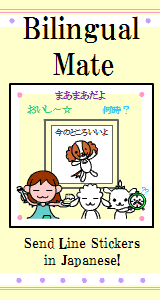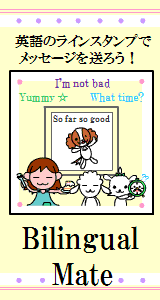How to Read Japanese
| Quick Links: | Katakana | , Hiragana & Kanji |
Japanese Alphabets
Japanese has three different alphabets. Let's look at the differences between them. I'm sure you have heard of Sumo wrestling, that "Sumo" is Japanese as you may know. Using that lets look at the Alphabets Japanese uses.
| alphabet name | example | Notes |
| romanji | sumou | Romanji Japanese is Japanese written in the english characters. |
| Hiragana | すもう | Main phonetic alphabet |
| Katakana | スモウ | phonetic alphabet used for forign things such as names and words origninating from other languages or spelling out sounds of things. |
| Kanji | 相撲 | symbols that carry meanings, and can have multiple ways to be read. |
| All of the above examples are read as sumou. Modern Japanese written properly is 90% kanji, the rest being hiragana and the odd katakana | ||
Japanese Vowels
If you want to be sure your reading the Romanji Japanese correctly, this is part you need to keep in mind. Japanese vowels only have one pronounciation unlike English an many other languages. The main point in reading Romaji Japanese is to use the right vowel pronounciation. See the below tables
| Vowel | Hiragana | Katakana | Read As Example | NOT read as |
| a | あ | ア | like 'a' in "father" | never like 'a' in "ape" "able" |
| i | い | イ | like 'i' in "machine" | never like 'i' in "internet" or "insect" |
| u | う | ウ | a short oo like in "boom" or "broom" | never like 'u' in "up" or "under" |
| e | え | エ | like 'e' in "set" or "elephant" | never like 'e' in "japanese" or "cheese" |
| o | お | オ | like 'o' in "obey" or when you say "this is the letter o" | never like 'o' in "boom" or "broom" |
| Long Vowels | any vowel with a dash above it eg. "ō", is a lengthend vowel and should be held with a double length. Also an "u" followed by an "o" like "kou" is also lengthened, essentially the same as "kō" | |||
Japanese Hiragana (ひらがな)
Most Japanese Hiragana characters are usually a combination of an English Consonant plus a Vowel. for example k(constinant) and a(vowel) together "ka" is one character "か" (don't forget to use the right a pronounciation from above)
here is a table with all the Japanese hiragana
| あ a |
い i |
う u |
え e |
お o |
| か ka |
き ki |
く ku |
け ke |
こ ko |
| さ sa |
し shi |
す su |
せ se |
そ so |
| た ta |
(ち) chi |
(つ) tsu |
て te |
と to |
| な na |
に ni |
ぬ nu |
ね ne |
の no |
| は ha |
ひ hi |
(ふ) fu |
へ he |
ほ ho |
| ま ma |
み mi |
む mu |
め me |
も mo |
| や ya |
ゆ yu |
よ yo |
||
| ら ra |
り ri |
る ru |
れ re |
ろ ro |
| わ wa |
を wo |
|||
| ん n |
||||
| が ga |
ぎ gi |
ぐ gu |
げ ge |
ご go |
| ざ za |
じ ji |
ず zu |
ぜ ze |
ぞ zo |
| だ da |
(ぢ) di |
(づ) du |
で de |
ど do |
| ば ba |
び bi |
ぶ bu |
べ be |
ぼ bo |
| ぱ pa |
ぴ pi |
ぷ pu |
ぺ pe |
ぽ po |
| きゃ kya |
きゅ kyu |
きょ kyo |
||
| しゃ sha |
しゅ shu |
しょ sho |
||
| (ちゃ) cha |
(ちゅ) chu |
(ちょ) cho |
||
| ひゃ hya |
ひゅ hyu |
ひょ hyo |
||
| ぎゃ gya |
ぎゅ gyu |
ぎょ gyo |
||
| じゃ ja |
じゅ ju |
じょ jo |
||
| びゃ bya |
びゅ byu |
びょ byo |
||
Japanese katakana (カタカナ)
Like Hiragana, most Japanese Katakana characters are usually a combination of an English Consonant plus a Vowel. for example k(constinant) and a(vowel) together "ka" is one character "か" (don't forget to use the right a pronounciation from above)
here is a table with all the Japanese katakana
| ア a |
イ i |
ウ u |
エ e |
オ o |
| カ ka |
キ ki |
ク ku |
ケ ke |
コ ko |
| サ sa |
シ shi |
ス su |
セ se |
ソ so |
| タ ta |
(チ) chi |
(ツ) tsu |
テ te |
ト to |
| ナ na |
ニ ni |
ヌ nu |
ネ ne |
ノ no |
| ハ ha |
ヒ hi |
(フ) fu |
ヘ he |
ホ ho |
| マ ma |
ミ mi |
ム mu |
メ me |
モ mo |
| ヤ ya |
ユ yu |
ヨ yo |
||
| ラ ra |
リ ri |
ル ru |
レ re |
ロ ro |
| ワ wa |
ヲ wo |
|||
| ん n |
||||
| ガ ga |
ギ gi |
グ gu |
ゲ ge |
ゴ go |
| ザ za |
ジ ji |
ズ zu |
ゼ ze |
ゾ zo |
| ダ da |
(ヂ) di |
(ヅ) du |
デ de |
ド do |
| バ ba |
ビ bi |
ブ bu |
ベ be |
ボ bo |
| パ pa |
ピ pi |
プ pu |
ペ pe |
ポ po |
| キャ kya |
キュ kyu |
キョ kyo |
||
| シャ sha |
シュ shu |
ショ sho |
||
| (チャ) cha |
(チュ) chu |
(チョ) cho |
||
| ヒャ hya |
ヒュ hyu |
ヒョ hyo |
||
| ギャ gya |
ギュ gyu |
ギョ gyo |
||
| ジャ ja |
ジュ ju |
ジョ jo |
||
| ビャ bya |
ビュ byu |
ビョ byo |
||
Japanese Kanji
Originating from China, Kanji are characters with meaning and usually have multiple readings. A single Kanji can be, but is not always a whole word by itself. Modern Japanese is about 90% Kanji. There are over 2000 commonly used
Kanji in Japanese. Full list of the commonly used Kanji can be found here.
Below we'll just look at a few examples:
| Kanji | Meaning(s) | Reading(s) | Notes |
| 犬 | dog | inu, ken | most of the time read as inu |
| 猫 | cat | neko, byou | most of the time read as neko |
| 大 | big | oo, dai, tai | unlike the above two kanji, one single kanji may not always be a whole japanese word in itself. The above cat and dog are yes, but the word "big" in japanese is actually "ookii". so if we write that in japanese, we would use this kanji for the "oo" of ookii and the rest would be hiragana . Like this 大きい. |
In conclusion we should say, Kanji is not like Hiragana or Katakana in that you can't just go out and memorize it in a few days. Learn it as you learn Japanese. It should not be the focus of a begginer in Japanese. When you learn a new Japanese word, try looking up the Kanji it is written with. Review the meanings and readings of each Kanji the word uses, and you will start to remember the Kanji as they reapear.
Back to top



























